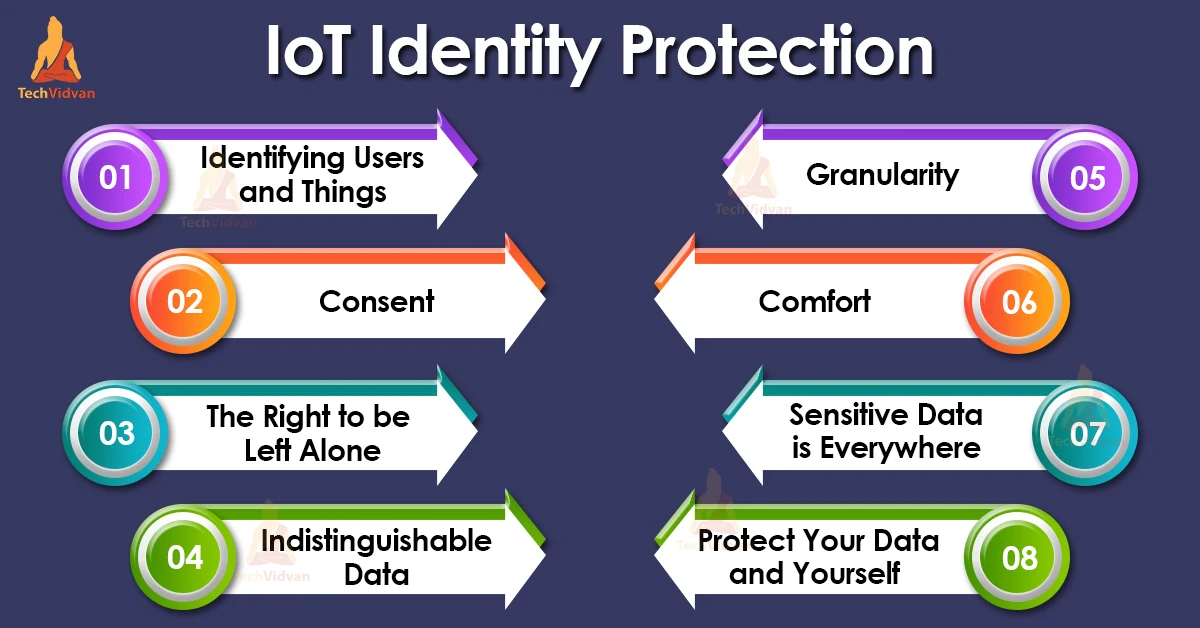In this article we will discuss the topics relating to the IoT identity protection. So let’s begin.
Introduction to IoT Identity Protection
IoT devices make life easy and convenient. One can remotely switch on or off the lights in the bedroom, get real-time updates about the weather reports and control smart cars. Smart thermostats, security systems and refrigerators make living comfortable. These devices are computers and so there are many chances of exposure to hackers and cyber criminals.
The internet of things unfortunately opens access to ways through which criminals could easily login in to a system and steal valuable, sensitive information. Thus IoT enabled systems and devices must ensure proper IoT protection to avoid major crimes from happening.
Identifying users and things
Issues of identification are important when it comes to personalised devices. Internet banking for example is a very sensitive and crucial task that must be done securely with IoT devices. By introducing features such as multi factor authentication, consent forms, terms and conditions, agreements we can ensure that identity of the user is not at stake.
In addition, authorization, encryption and authentication protocols are required for every IoT device.
Implementing security for identities from the start
IoT devices are interconnected so it becomes important to ensure security from the beginning to the end. The security solution must be user-friendly, interactive and reliable.
a. Consent
The major problem about IoT devices is consent. The device companies do not inform the users about the data gathering system and what kind of data the devices gather. The devices may at times collect relevant data and this leads to information processing of irrelevant data. Through these devices, companies get access to the user’s personal life.
b. The right to be left alone
Users and consumers have regular expectations for privacy in certain situations. It may be usual to expect surveillance cameras in commercial areas but the user may be taken by surprise to find cameras in their smart cars. IoT devices cause hindrance and acknowledge these rights as the “right to be left alone”.
c. Indistinguishable data
IoT has many uses in the real world and most of the uses target to support a group of people rather than one particular user. Each user may provide a set of actions but the IoT may not be able to process every user preference. For example, small iot devices in complexes cannot adhere to the request of every customer.
d. Granularity
Big data poses great risks to user privacy and system privacy. IoT is intimate and highly scalable meaning it collects data from a large number of places and in large amounts. This leads to the creation of high detail profiles about the user and directly exposes the user to great harm and danger.
e. Comfort
IoT is normalising exposure of private user information. Users think it is normal to provide sensitive information to digital systems. People with lesser understanding of technology are at a risk for phishing and various other cyber activities. This all because IoT makes it comfortable to share vital information about the user with less safety protocols.
How could you be the biggest threat to your personal security online?
The internet of things largely makes our lives easier. However, sometimes due to deadlines for a product delivery the organisations overlook the security considerations.
Identity theft mainly involves accessing data. Hackers gather information from all devices by close monitoring of devices such as refrigerators, ovens, geysers, microwaves and thermostats.
The more details the hacker has about the user, the easier it becomes to steal his/her identity.
Sensitive data is everywhere
With the arrival of personalised technical gadgets, we can see that everyone around us owns a personal mobile phone that connects to their personal gadgets. So if a user accesses their phone outside and someone peeks into their password or pin, this allows them to easily hack the rest of their gadgets.
Our smartwatches and mobile phones contain extremely sensitive and probate information such as our names, email address, credit card information and much more. So the more connected we become, the easier it gets for hackers to access sensitive information.
The greatest threat today – Identity Theft
If the thief that hacks your devices impersonates you then this is identity theft. And this is a bigger issue and concern in this modern connected world. Other individuals who know and contact you may believe that it is you and trust you with their own personal information not knowing that the hacker is trying to access their assets and personal information.
Protect your data and yourself
- Understand who can access your data and share only the needed amount of information. Do not answer class from individuals pretending to be from banks and life insurance companies
- Encrypt your data on both ends of sending and receiving messages to ensure your messages are private and protected.
- Use strong authentication. Ensure that all your devices have different pins, codes and passwords that have strong characters that make it harder to hack your devices.
- Read the documentation of Iot devices carefully before making a purchase. Follow all the security guidelines strictly.
Steps taken in IoT for identity protection
The indemnity of any individual consumers should be covered in IoT. It is very important that the personal details of any user are case protected and secured. Some of the measures for identity protection are as follows:
- Keep strong and case sensitive passwords. Each device should have a different password and do not disclose this information to anyone online.
- Ensure that your records are safe
- Apply for VPN personal wireless to connect personal devices in a secure manner
- Encrypt user information and do not offer unauthorised access to any digital device
Installation of clever chips in all sensors - The best authentication tool for IoT devices is cryptography. IoT devices are capable of interacting with cryptographic keys
Summary
This was about identity protection in IoT. We saw the various issues concerning user identity in IoT. Then we looked at the steps taken to protect identity in IoT. We hope our explanation was easy to understand.

